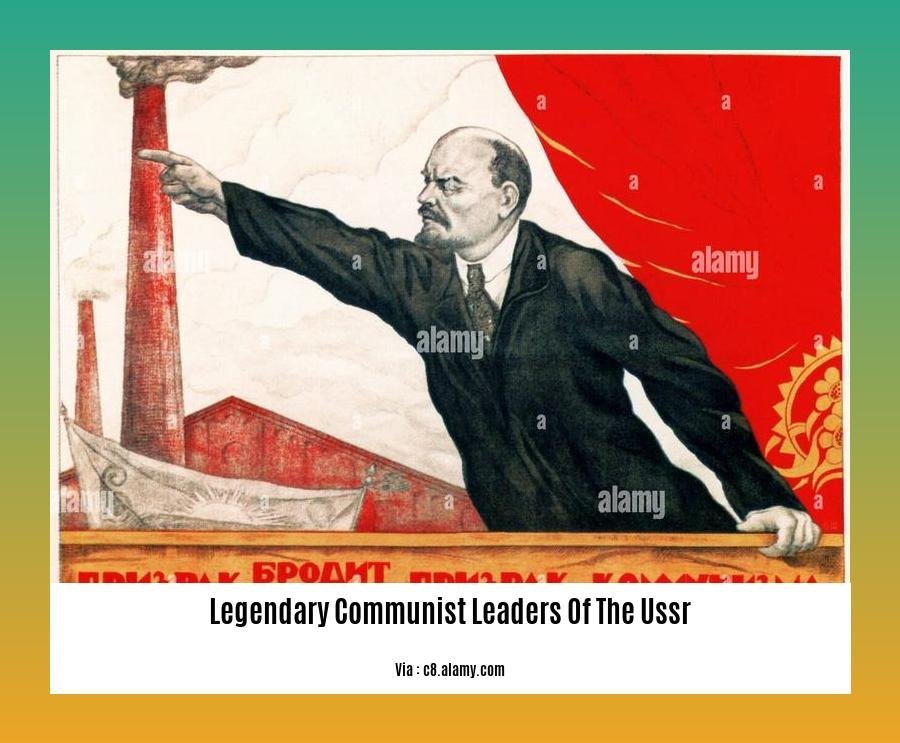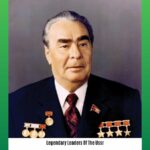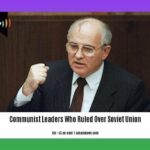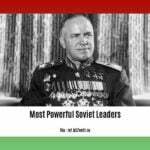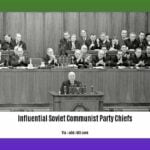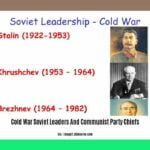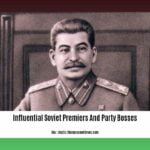Delve into the annals of Soviet history as we unveil the captivating lives of the legendary communist leaders of the USSR in “The Legendary Communist Leaders of the USSR: A Historical Profile.” Our exploration will shed light on their ideological fervor, political acumen, and enduring impact on the course of history.
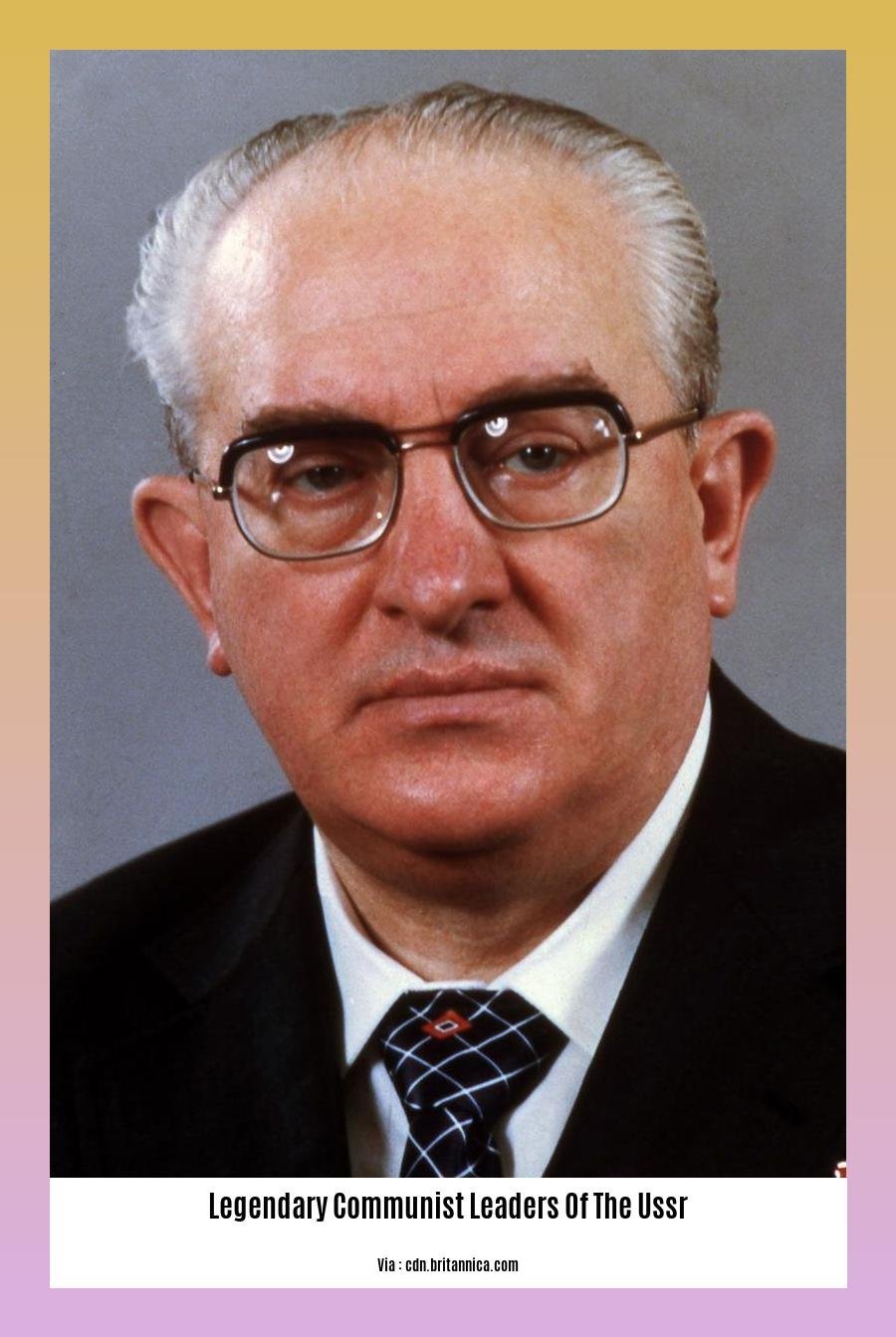
Key Takeaways:
- Vladimir Lenin founded the Soviet Union and served as its first leader.
- Joseph Stalin’s ruthless dictatorship and Great Purge left a significant impact on the USSR.
- Nikita Khrushchev initiated de-Stalinization and introduced reforms.
- Leonid Brezhnev’s long tenure was marked by economic stagnation and international tensions.
- Mikhail Gorbachev’s reforms of perestroika and glasnost ultimately led to the collapse of the Soviet Union.
Legendary Communist Leaders of the USSR
These charismatic and influential figures left an indelible mark on Soviet history and shaped the global political landscape:
Vladimir Lenin:
– Revolutionized Russia with his Bolshevik Party.
– Established the USSR, the first communist state.
– His New Economic Policy softened the transition to socialism.
Joseph Stalin:
– Ruthless dictator who transformed the USSR into an industrial powerhouse.
– His brutal Great Purge eliminated perceived threats.
– Led the Soviet Union to victory in World War II.
Nikita Khrushchev:
– Denounced Stalin’s crimes and initiated de-Stalinization.
– Introduced economic reforms and expanded Soviet influence.
– His Cuban Missile Crisis brought the world to the brink of nuclear war.
Leonid Brezhnev:
– Period of economic stagnation and geopolitical tensions.
– Pursued détente with the West while expanding Soviet influence in Eastern Europe.
– His Afghan War drained Soviet resources and weakened its global standing.
Mikhail Gorbachev:
– Last leader of the USSR, introduced glasnost (openness) and perestroika (restructuring).
– His reforms weakened the Communist Party and ultimately led to the Soviet Union’s collapse.
Want to learn about the prominent figures who shaped the Soviet Union during the Cold War? Explore our insightful article on cold war soviet leaders and communist party chiefs to uncover their intricate roles.
Curious about the individuals who held the greatest power within the Soviet regime? Discover the fascinating profiles of the most powerful leaders of the soviet union in our comprehensive analysis.
Delve into the lives and achievements of the influential soviet premiers and party bosses who played pivotal roles in shaping the course of Soviet history.
Nikita Khrushchev: De-Stalinization and the Cuban Missile Crisis
Key Takeaways:
De-Stalinization:
- Khrushchev’s secret speech in 1956 exposed Stalin’s crimes, marking a turning point in Soviet history.
- It condemned Stalin’s repressive policies and laid the foundation for a more liberal and open society.
Cuban Missile Crisis:
- In 1962, Khrushchev secretly deployed nuclear missiles in Cuba, igniting a 13-day crisis with the United States.
- The tense standoff brought the world to the brink of nuclear war but ultimately led to a compromise and the removal of missiles from both sides.
Background:
Nikita Khrushchev, born in 1894, rose through the ranks of the Communist Party during Joseph Stalin’s reign. After Stalin’s death in 1953, Khrushchev became the leader of the Soviet Union.
De-Stalinization Policy:
Khrushchev’s most significant contribution was his policy of de-Stalinization. In his 1956 secret speech, he denounced Stalin’s “cult of personality” and condemned his use of terror and purges. This speech sparked a wave of reforms and liberalization in the Soviet Union.
Reforms and Economic Policy:
Khrushchev introduced various economic reforms to improve living standards and increase productivity. He promoted agricultural reforms and expanded consumer goods production. These measures, however, faced mixed success.
Foreign Policy:
Khrushchev sought to improve relations with the West, pursuing a policy of “peaceful coexistence.” However, tensions remained high, particularly during the Cuban Missile Crisis in 1962. The crisis illustrated the dangerous consequences of the Cold War arms race.
Fall from Power:
Khrushchev’s popularity declined due to economic setbacks and growing tensions with the West. In 1964, he was ousted from power and replaced by Leonid Brezhnev.
Later Years:
After his removal, Khrushchev spent his remaining years in retirement. He wrote his memoirs and remained a controversial figure in Soviet history.
Citation:
- Nikita Khrushchev
Leonid Brezhnev: Era of Stagnation and Détente
Leonid Brezhnev, ruler of the Soviet Union from 1964 to 1982, oversaw an era characterized by both stagnation and détente.
Stagnation and Economic Decline
Brezhnev’s rule was marked by a period of economic stagnation. The Soviet economy, once a global superpower, began to decline under his leadership. Industrial growth slowed, and agricultural production struggled to meet the needs of the population.
Détente and International Relations
Despite the economic challenges, Brezhnev pursued a policy of détente with the West. He sought to reduce tensions between the Soviet Union and the United States, and he played a key role in the Strategic Arms Limitation Treaty (SALT), which limited the number of nuclear weapons.
Afghan War and its Impact
Brezhnev’s foreign policy was also marked by the Soviet invasion of Afghanistan in 1979. The war proved to be a major drain on the Soviet economy and led to a surge in anti-Soviet sentiment around the world.
Key Takeaways:
- Brezhnev’s era is often characterized as a period of stagnation and economic decline.
- He pursued a policy of détente with the West, seeking to reduce tensions between the Soviet Union and the United States.
- The Soviet invasion of Afghanistan in 1979 proved to be a major setback for Brezhnev’s foreign policy.
Citation:
– “Leonid Brezhnev: General Secretary of stability and stagnation” by Russia Beyond:
Mikhail Gorbachev: Perestroika and the End of the Cold War
Key Takeaways:
- Mikhail Gorbachev: Introduced perestroika (restructuring) and glasnost (openness) to revitalize the Soviet economy and society.
- Perestroika: Decentralized decision-making, encouraged innovation, and allowed for more private enterprise.
- Glasnost: Increased transparency in government and society, allowed for greater freedom of speech and expression.
- End of the Cold War: Gorbachev’s reforms weakened the Communist Party, leading to the collapse of the USSR.
Mikhail Gorbachev: Perestroika and the End of the Cold War
Mikhail Gorbachev’s rise to power in 1985 marked a turning point in Soviet history and the Cold War. Recognizing the need for change in the face of economic stagnation and growing public discontent, Gorbachev embarked on a series of bold reforms.
Perestroika: Restructuring the Economy
Perestroika aimed to restructure the Soviet economy by decentralizing decision-making, encouraging innovation, and allowing for more private enterprise. Gorbachev believed that these reforms would revitalize the economy and make it more competitive.
Glasnost: Opening Up Soviet Society
Glasnost, meaning “openness,” brought unprecedented levels of transparency to Soviet society. Censorship was relaxed, allowing for greater freedom of speech and expression. This increased transparency exposed many of the problems hidden within the Soviet system.
Weakening the Communist Party
Gorbachev’s reforms weakened the power of the Communist Party, which had ruled the Soviet Union for decades. This led to the rise of opposition movements and challenges to the party’s authority.
End of the Cold War
Gorbachev’s reforms had a profound impact on the Cold War. His focus on dialogue and cooperation with the West helped ease tensions and eventually led to the end of the conflict. In 1991, the Soviet Union dissolved, marking the end of the Cold War.
Legacy of Mikhail Gorbachev
Mikhail Gorbachev’s legacy is complex. He is credited with ending the Cold War and bringing greater freedom and openness to Soviet society. However, his reforms also contributed to the collapse of the Soviet Union. Gorbachev remains a controversial figure in Russian history, but his impact on the world cannot be denied.
Citation:
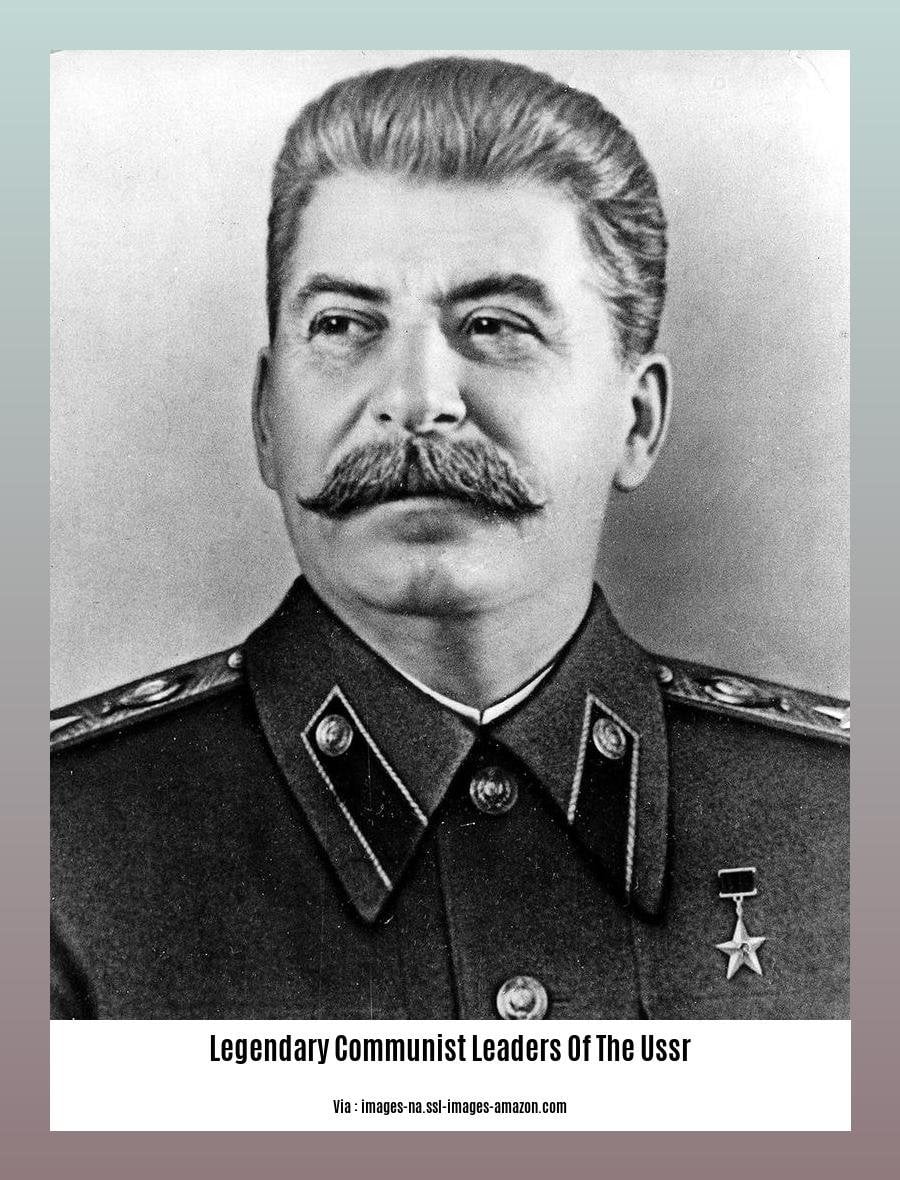
FAQ
Q1: Who was the first leader of the Soviet Union?
A1: Vladimir Lenin, who founded the Russian Communist Party and led the Bolsheviks to victory in the Russian Revolution, became the first leader of the Soviet Union.
Q2: Which Soviet leader is known for his brutal dictatorship and the Great Purge?
A2: Joseph Stalin ruled the Soviet Union from 1924 to 1953 and is infamous for his ruthless dictatorship, which resulted in the deaths of millions of people during the Great Purge.
Q3: Which leader initiated the “de-Stalinization” process?
A3: Nikita Khrushchev succeeded Stalin in 1953 and began the de-Stalinization process, reducing repression and introducing some reforms.
Q4: Who led the Soviet Union during a period of economic stagnation and increased international tensions?
A4: Leonid Brezhnev ruled from 1964 to 1982 and oversaw a period known as the “Era of Stagnation,” characterized by economic decline and a tense relationship with the West.
Q5: Which leader’s reforms of “perestroika” and “glasnost” ultimately led to the collapse of the Soviet Union?
A5: Mikhail Gorbachev, the last leader of the Soviet Union, introduced the “perestroika” (restructuring) and “glasnost” (openness) reforms in an attempt to revitalize the Soviet economy and address political stagnation. However, these reforms inadvertently weakened the Soviet Communist Party and contributed to the collapse of the Soviet Union.
- Guatemala vs. Costa Rica: Plan Your Trip Smartly - April 16, 2025
- Master Types of Pumps: Ultimate Guide to Selection - April 16, 2025
- Unlock Types of Makeup Secrets: Master Any Look Now - April 16, 2025
